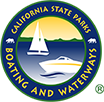


California water body authorities very early recognized the westward spread of mussel infestation via the Colorado River system and the potential harm to state waterways should our lakes and reservoirs be invaded. To help prevent California waterways from infestation, DBW was authorized to manage the collection and use of the quagga and zebra mussel infestation prevention fees from California fresh water boaters.
GRANT ANNOUNCEMENTS
- 2025 QZ Grant Solicitation Notice (Press Release)
- 2025 Solicitation Notice
- 2025 QZ Grant Presentation Notice and Agenda
- 2025 QZ Presentation Questions and Answers
- QZ Grant Program Notifications Sent
APPLICATION MATERIALS
QZ GRANT WEBINARS
- For New Applicants: QZ Grant Program Overview Video
- 2025 Presentation: 2025 QZ Grant Presentation
REFERENCE MATERIALS
GRANT STATUS BY FISCAL YEAR
FUNDING SUMMARY SPREADSHEET
STATEWIDE MAPS
- 2025 QZ Grant Map Locations
- 2024 QZ Grant Map Locations
- 2023 QZ Grant Map Locations
- 2022 QZ Grant Map Locations
- 2021 QZ Grant Map Locations
- 2019/2020 QZ Grant Map Locations
- 2018/2019 QZ Grant Map Locations
- 2017/2018 QZ Grant Map Locations
- 2016/2017 QZ Grant Map Locations
- 2015/2016 QZ Grant Map Locations
- 2014/2015 QZ Grant Map Locations
PROGRAM INFORMATION
As part of its mission, the Division of Boating and Waterways manages the Quagga and Zebra Mussel Infestation Prevention Grant Program, which supports preventative plans that help protect California’s reservoirs from a dreissenid mussel infestation.
Through program funding, the State could avert significant damage to the water delivery system, which provides drinking water to millions of Californians and irrigation to a $40 billion per year agricultural industry. Preventive programs can also help keep reservoirs open for recreational activities, like boating and fishing.
Funding priority is given to prevention plans that are consistent with Fish and Game Code, Section 2302, which also takes into consideration the benefits of a regional-scale dreissenid mussel infestation Prevention Plan such as:
Assessing the vulnerability of the reservoir for the introduction of non-native dreissenid mussel species by, but not limited to:
- Monitoring the number of visitors
- Inquire as to the origin of visitors (relative to dreissenid infested waters)
- Monitor outside equipment that is allowed (rentals)
- Survey the duration of use (day-use, slipped/moored)
- Monitor access (managed or unmanaged)
- Prevention efforts being implemented
- Education efforts being implemented
Develop and implement a program designed to prevent the introduction of non-native dreissenid mussel species by including, at a minimum, all of the following:
- Public Education consists of handouts, flyers, signage, postings and verbal communication and education.
- Monitoring consist of applying substrate and plankton tows equipment for monitoring the adult and/or larval mussels.
- Management of those recreational, boating or fishing activities that are permitted which shall include, but not limited to; inspections, decontamination stations and/or information where to decontaminate a vessel, exit inspections and banding of vessels to trailers.



